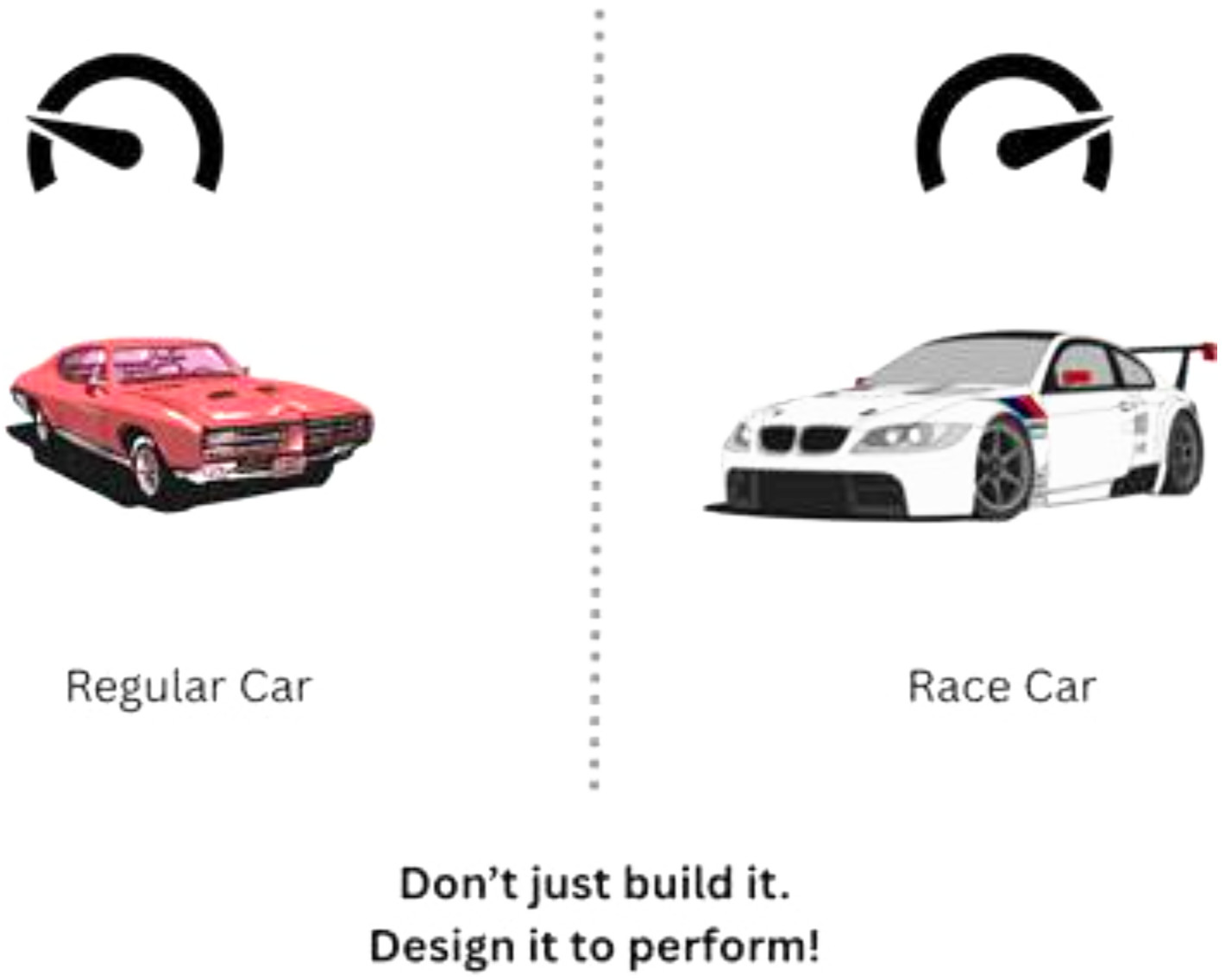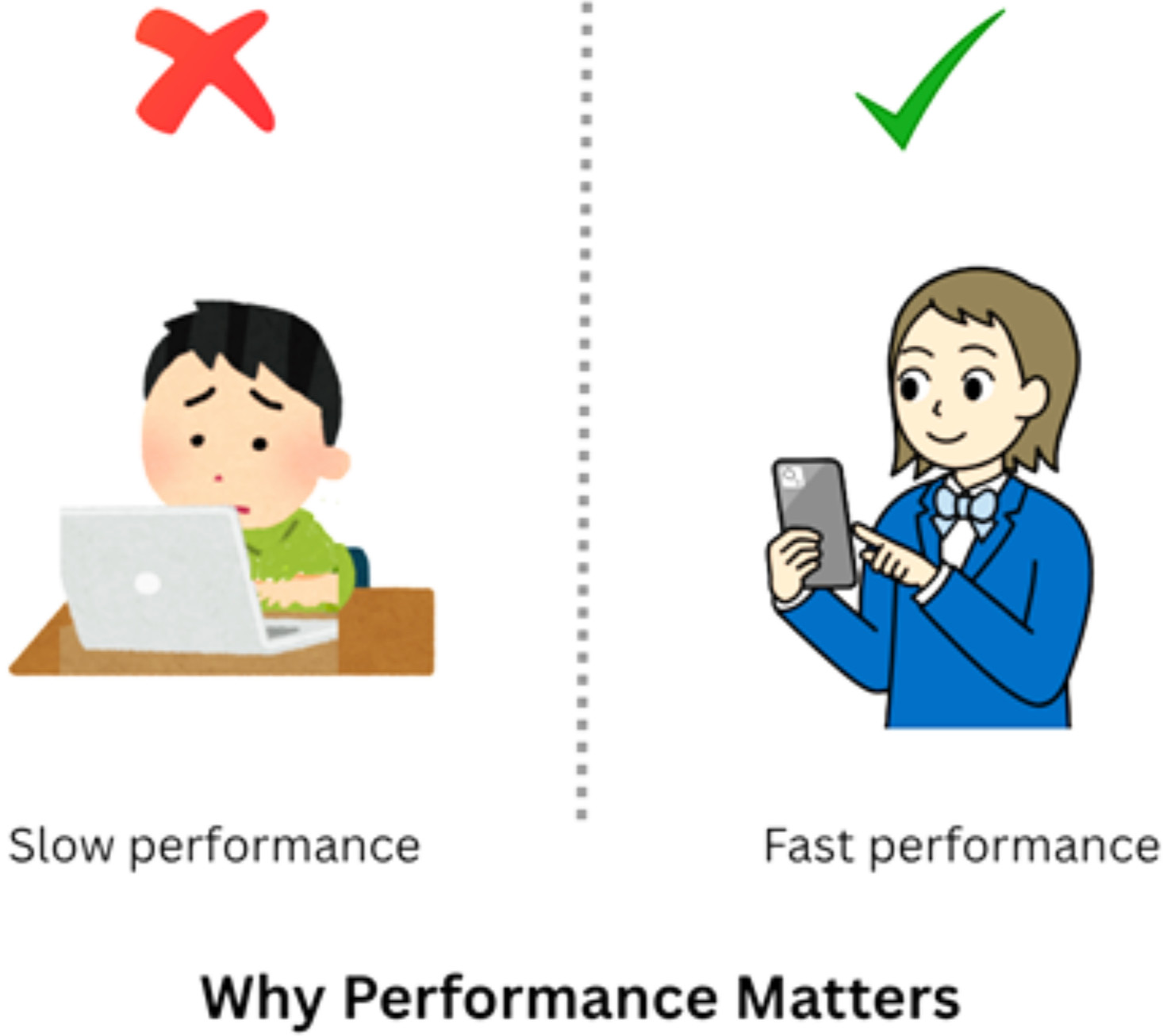What is Performance Engineering?
|
|
Users need highly scalable, reliable, and faster applications to meet the demands of the software-driven world. Performance is a mandatory requirement regardless of whether it is an eCommerce website experiencing unexpectedly high traffic during holiday seasons or a SaaS platform handling thousands of concurrent sessions. Performance engineering is a proactive discipline that has emerged as a direct consequence of this rising demand. Well, what exactly is performance engineering, and why is it so necessary to modern software development?
This blog intends to dissect this very question and provide detailed answers to the readers. It explains the difference between performance engineering and traditional performance testing, highlights its critical elements, and outlines how AI-powered testing solutions act as powerful allies in the field of performance engineering.
What is Performance Engineering?
Consider watching a fast-paced action movie such as Mad Max: Fury Road. Everything occurs fast, intensely, and precisely when it should. The cars are designed to work flawlessly in harsh settings along with having a stylish exterior. Now imagine a chase scene where one of those cars sputtered. The whole flow would fracture. Performance engineering offers software systems with that kind of seamless, back-end optimization. It is not just about whether the app functions, but also about whether it works dependably, effectively, and smoothly even under stress.

Simply put, performance engineering is the practice of planning, developing, and handling software systems to ensure optimal performance under expected (and unexpected) workloads. Instead of waiting until the eleventh hour of the race day to see if it breaks down, it is like tweaking a race car during the design stage.
Performance Engineering Definition
Performance engineering is integrated throughout the software development lifecycle (SDLC), whereas conventional performance testing usually occurs late, generally right before a product is released. It involves predicting performance issues in the design and development phases rather than addressing them after they have already impacted users.
In other words, performance engineering is like having an automotive engineer ensure the full car is built for speed, safety, and endurance from the very start, whereas performance testing is like verifying the car’s brakes right before a road trip.
Performance Engineering Characteristics
Some defining characteristics of performance engineering are listed below:
- Designing with performance in mind, such as selecting scalable architecture and improving algorithms.
- Including performance testing in automated pipelines to make sure that each code modification is assessed for speed and efficiency.
- Monitoring performance not only in test environments but also in production environments to detect real-world issues before they affect users.
It is also critical to remember that performance engineering is a cultural mindset as much as a technical effort. Delivering a user experience that is rapid, reliable, and scalable requires cooperation between development, operation, product, and QA teams. Software that just “functions” is no longer enough as user expectations keep escalating. It must also work properly and consistently like those well-oiled machines racing across the desert in a George Miller movie.
Performance Engineering vs. Performance Testing: Key Differences
| Aspect | Performance Engineering | Performance Testing |
|---|---|---|
| Timing | Throughout SDLC (Shift-left + Shift-right) | End of development cycle |
| Scope | Architecture, design, testing, monitoring | Load, stress, and endurance tests |
| Goal | Eliminate issues and embed performance | Identifies issues under load |
| Teams Involved | Developers, QA, Ops, Product | Mostly QA/Test engineers |
| Feedback Cycle | Continuous, proactive, and ongoing | Post-development only |
Although it is a vital part of performance engineering, performance testing is merely just one aspect of the comprehensive approach.

Why Performance Engineering Matters
- Improved User Experience: Users find slow applications frustrating, and they may lead to high bounce rates, negative reviews, and lost revenue. Teams can reduce the chance of performance-related problems showing up in production by utilizing performance engineering to ensure that performance standards are met from the start. As a result, users appreciate smooth, responsive apps that encourage repeated use. Read: UX Testing: What, Why, How, with Examples.
- Cost Efficiency: It can be significantly more costly to tackle a performance bottleneck late in the development cycle or worse in production, than it is to do so early in development or design. Proactive detection of possible inefficiencies is enabled by performance engineering, which helps teams to resolve problems before they become worse and eliminate expensive last-minute patches and emergency firefighting.
- Scalability Assurance: Software must be able to scale with systems and user bases without undergoing a drop in performance. Scalability testing and capacity planning are part of performance engineering. This makes sure that systems can scale to meet demand. It facilitates in designing and building systems that gracefully handle changes in load and prevent outages during instances of high traffic. Read: Software Scalability – A Complete Guide.
- Reduced Risk: Organizations reduce the risk of failed deployments, outages, or performance regressions by integrating performance considerations through the development lifecycle. This boosts operational stability by minimizing end-user disruption and improving service level agreement (SLA) compliance.
- Accelerated Time-to-Market: Teams get continuous feedback on resource utilization and application responsiveness when performance metrics are incorporated into automated pipelines. Developers can quickly fix it, thanks to this feedback. Quicker release cycles with uncompromised quality are a direct outcome of this feature. Read: The Impact of Test Automation on Time to Market.
Core Components of Performance Engineering
- Architectural Planning for Performance: The base for a system’s performance under load is laid by the architectural decisions taken. In order to ensure scalability and responsiveness, performance engineering introduces design patterns and principles like caching strategies, load balancing, distributed architectures, and asynchronous processing. In order to examine potential hurdles in database interactions, third-party distributed architectures, and latency, teams also conduct architecture reviews and performance risk analysis.
- Shift-Right and Shift-Left Methods: Performance benchmarks are introduced into the early stages of development, like design and coding, by the shift-left methodology. Developers build efficient algorithms, execute local performance assessments, and mimic real-life workloads with lightweight mock services. This is improved by shift-right, which utilizes observability and real-user monitoring (RUM) to push performance visibility into production. Teams can detect problems across different settings and improve software quality comprehensively with this dual approach.
- KPIs and Performance Metrics: Monitoring and critical metrics that indicate system health and user experience is necessary for efficient performance engineering. Response time highlights how rapidly user input is processed by the system. The volume of transactions handled over time is calculated by throughput. Using resources ensures that systems are neither over- nor under-equipped. Teams can assess acceptable performance and monitor adherence to business goals by defining service level objectives (SLOs) and service level indicators (SLIs).
- Continuous Observation and Feedback Loops: Continuous monitoring systems are utilized in modern performance engineering to collate, examine and address performance data. Early performance management is made possible with these systems. They offer valuable data on how applications work in diverse settings. Dashboards are used to visualize metrics, and notifications are set up to alert teams when performance standards are not being achieved. Feedback loops ensure that outcomes are communicated to the development team for swift optimizations.
- Load and Stress Simulation: Performance engineers leverage controlled experiments to mimic various user loads in order to get systems ready for real-world use. While stress testing presses the system to its limits to assess stability and error handling, load testing demonstrates how the system works under typical usage. To determine capacity thresholds and long-term degradation, tests such as soak, endurance, and spike are also leveraged. To ensure that performance testing is continued, these simulations are incorporated into automated test pipelines.
Tools Used in Performance Engineering
A vast range of tools built for different lifecycle stages are implemented in performance engineering.
To examine system behavior, load testing tools like Locust, Gatling, LoadRunner, JMeter, and BlazeMeter mimic user traffic and load conditions. For more realistic situations, distributed testing is supported by cloud-based solutions such as BlazeMeter.
Real-time information into system performance is offered by monitoring tools like Grafana, Dynatrace, New Relic, Prometheus, and Datadog, which monitor metrics like memory, I/O, CPU, disk, and network latency and trigger alerts for discrepancies.
By enforcing performance thresholds before code advancements, CI/CD integration tools like GitLab CI, CircleCI, and Jenkins aid automated performance testing within deployment pipelines.
Tools for scripting and automation, like Python, PowerShell, and Bash, connect and automate different phases of the testing process. This is right from setting up the environment to analyzing and reporting the outcomes.
Performance Engineering in DevOps and Agile Environments
Performance engineering needs to be highly scalable, lightweight, and automated in DevOps and Agile teams that work rapidly. For faster release cycles, conventional performance testing methods are often too slow or laborious. By integrating performance criteria into the CI/CD pipeline, where tests are executed automatically at each code commit or deployment. Performance engineering successfully tackles this issue.
Agile places a strong emphasis on iterative delivery, and new performance issues are observed with each iteration. Performance engineers enabled teams in detecting potential performance risks related to new features or architectural changes by taking part in sprint planning and feedback. To establish parity between performance and quality goals, performance acceptance criteria are defined in addition to functional ones.
Performance engineering aids the shared ownership ethos of DevOps culture. Teams of operations, developers, and testers collaborate to ensure the system adheres to non-functional needs. Production telemetry is used to notify development efforts as observability practices are adapted. Platforms, for container orchestration, like Kubernetes, aids resource-efficient scaling and lets engineers adapt to service performance in response to demand in real-time. Read: Containerization and Test Automation Strategies.
Best Practices for Implementing Performance Engineering
Initiate Early
Performance engineering should be initiated Early in the software development method. Missed optimization opportunities and costly rework are often the results of waiting until the end of the SDLC. Teams can architect systems with efficiency and scalability in mind by establishing performance-related non-functional needs alongside functional ones during design and planning. High-performing software is developed on a solid foundation of early examination of the system architecture, third-party dependencies, and expected load patterns.
Automate Performance Evaluations
In development environments that move faster, manual performance testing is not scalable. Every commit is validated against baseline metrics due to automation, which helps teams to integrate performance testing straight into CI/CD pipelines. Without human assistance, tools can automatically launch test settings, run load and stress situations, and analyze data. Developers can receive feedback almost immediately due to automated alerts and dashboards, which drastically shortens the time between identification and resolving issues.
Collaborate Cross-Functionally
DevOps and QA teams are not the only ones responsible for performance engineering. Establishing what consists of good performance needs collaboration among developers, architects, QA engineers, product managers, and site reliability engineers (SREs). Joint accountability ensures that performance objectives are taken into account for all functionalities and services and helps eliminate blind spots. Shared dashboards, cross-team retrospectives, and collaborative planning encourage transparency and continuous development.
Use Realistic Test Data and Scenarios
The extent to which the test setting replicates actual usage establishes how accurate performance testing is. Important edge cases and usage patterns are often overlooked by tests that employ artificial or excessively sanitized data. Test scenarios should be developed by performance engineers to mimic actual real-life end-user behavior, geographic distribution, data volumes, and access frequencies. Systems are verified under accurate, real-world scenarios by using anonymized production data and modeling peak usage patterns.
Continuously Monitor
Post deployment, performance engineering continues. Real-time system monitoring is required to detect any regressions, lags, or unusual trends. Teams can set up alert thresholds and visualize system metrics over time with continuous monitoring looks such as Prometheus, Datadog, New Relic, or Grafana. These findings aid in proactive tuning, helps in the early detection of performance drifts, and direct subsequent optimization efforts. Additionally, monitoring provides useful user experience information to support synthetic testing.
Clearly Establish SLAs and Performance Budgets
Teams should define quantifiable standards in the form of budgets or service-level objectives (SLOs) in order to impose performance expectations. These could be limitations on memory usage, response time, or API throughput. During development and testing, these restrictions act as a guideline, helping teams make well-informed decisions about trade-offs between functionality, performance, and release schedules. Well-defined SLAs also help align technical realities and business expectations.
Conclusion
Performance engineering is a methodology and culture that ensures applications offer a flawless experience in any scenario. Performance needs to be engineered, not just validated, from code to customer, from architecture to deployment. Organizations can enhance automation coverage, accelerate delivery cycles, and scale performance engineering practices into functional testing layers by employing AI-powered testing tools.
In a world where even milliseconds matter, performance engineering is an utmost necessity.
| Achieve More Than 90% Test Automation | |
| Step by Step Walkthroughs and Help | |
| 14 Day Free Trial, Cancel Anytime |












